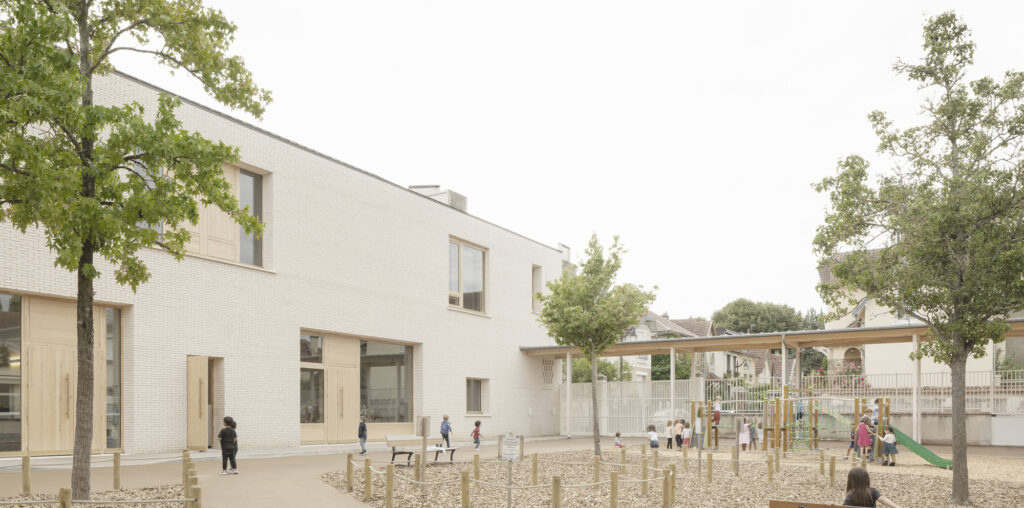

Text description provided by the architects. The location of the Lully Vauban school is in the heart of a city block. This form of urban life is special compared to others because of its singular introverted character. The extension project does not want to cause a brutal breaking. Despite the heterogeneity of existing constructions, it is integrated into overall writing by respecting the logic of implementation and using the existing architectural vocabulary.



This is a building for nursery and elementary schools, but also for the music conservatory, it is located at the center of the system. This position, beyond its functional and educational interest, makes it possible to structure the voids, to give meaning back to the playgrounds, becoming singular and delimited places.

The new building is discreet on an urban scale but widely perceptible on the city block’s scale. The school offers a harmonious whole to be seen from the neighboring accommodation. The project is an opportunity to redesign the access (nursery and elementary school). The new courtyard marks the entrance to the nursery school, now qualified and easily apparent from the street.



The ground floor is mainly dedicated to the nursery and therefore faces its courtyard, favoring a direct and level exterior relationship. The main living spaces of the elementary after-school, located upstairs, facing south, are structured around an outdoor terrace. The construction systems are simple, proven, and economical. The choice of masonry floors and walls was made in response to the acoustic issues linked to the practice of music.

The processes implemented make it possible to offer a long-lasting building while guaranteeing simple and rational implementation: two supporting facades, prefabricated floors, and a wooden frame. The architectural and structural aspect offers a generous volume capable of evolution. Supporting facades free up space without the obstruction of interior supporting elements. The materials are recyclable (wood, terracotta, zinc, bio-sourced insulation, etc.), and also chosen for their durability and their excellent resistance to external aggression.






